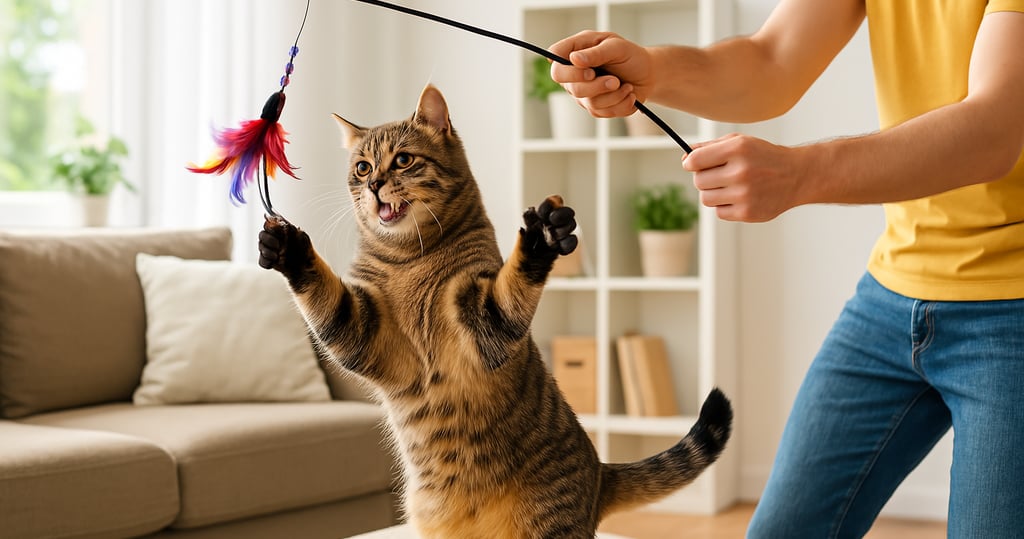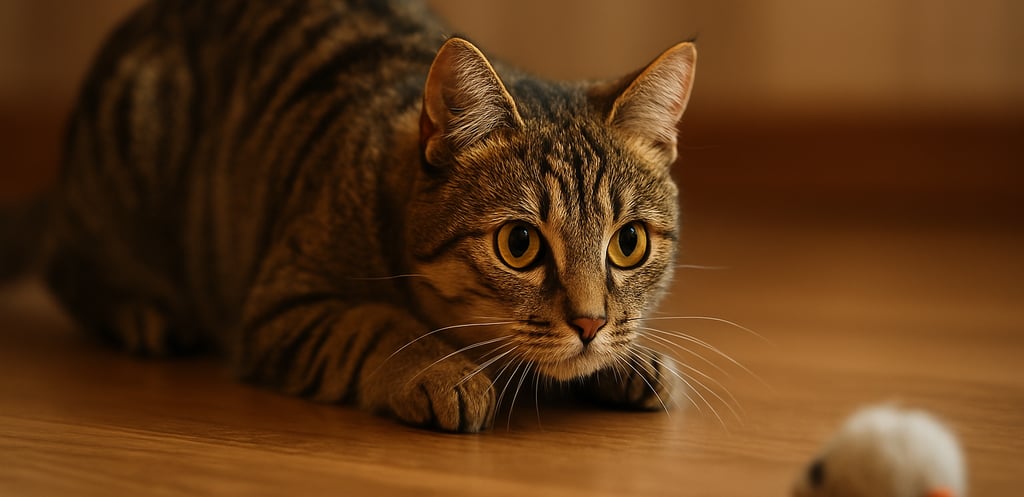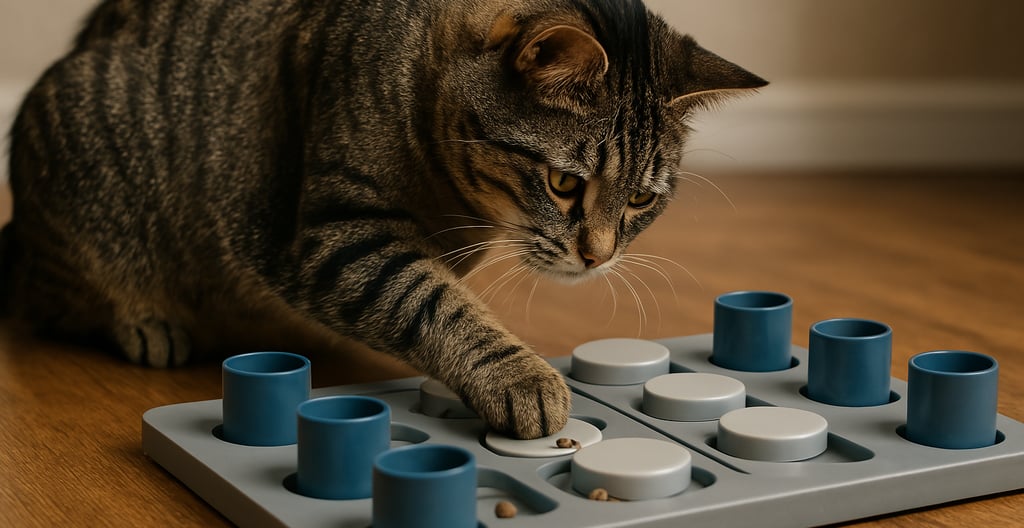The Importance of Play for Indoor Cats: Keeping Them Happy & Healthy
UNDERSTANDING YOUR MYSTERIOUS FELINE
For our indoor feline companions, the world outside the window can seem like a tantalizing, unreachable playground. While keeping cats indoors significantly increases their safety and lifespan by protecting them from traffic, predators, diseases, and other outdoor hazards, it also places a greater responsibility on us as owners to provide sufficient stimulation and outlets for their natural instincts. Play is not just a frivolous pastime for indoor cats; it is a fundamental requirement for their physical health, mental well-being, and emotional balance. Understanding the profound importance of play can help us create an enriching environment where our indoor cats can truly thrive.
Why Play is Essential for Indoor Cats
Cats are natural hunters, hardwired with predatory instincts that drive them to stalk, chase, pounce, and capture. In the wild, these behaviors are essential for survival. For indoor cats, play serves as a crucial substitute for these activities, offering a multitude of benefits:
Physical Exercise and Weight Management: Indoor cats are prone to a sedentary lifestyle, which can lead to weight gain and associated health problems like diabetes, arthritis, and heart disease. Regular play sessions provide vital physical exercise, helping to burn calories, maintain muscle tone, improve cardiovascular health, and keep them at a healthy weight. Activities like chasing a feather wand, batting at a ball, or leaping for a toy mimic the bursts of energy expended during a hunt.
Mental Stimulation and Boredom Prevention: An unstimulating environment can lead to boredom, lethargy, and even depression in cats. Play engages their minds, challenges their problem-solving skills, and keeps them alert and curious. Interactive toys, puzzle feeders, and varied play routines prevent a monotonous existence and keep their cognitive functions sharp.
Stress Reduction and Anxiety Relief: Play is an excellent stress reliever for cats. It allows them to release pent-up energy and frustration in a positive way. Engaging in satisfying play sessions can reduce anxiety, prevent a_behavioral_issues stemming from stress (such as over-grooming or destructive behavior), and promote a sense of calm and contentment.
Outlet for Natural Hunting Instincts: Even the most pampered house cat retains the instincts of a predator. Play allows them to express these natural behaviors – stalking, chasing, pouncing, and “killing” their toy prey – in a safe and appropriate manner. Satisfying these instincts is crucial for their psychological well-being and prevents them from seeking less desirable outlets for their predatory drive.
Bonding and Socialization: Interactive play sessions are a wonderful way to strengthen the bond between you and your cat. Spending quality time engaging in an activity they enjoy fosters trust, affection, and positive associations with your presence. For multi-cat households, appropriate play can also help facilitate positive social interactions and reduce conflict, as long as resources (toys, attention) are managed fairly.
Preventing Behavioral Problems: Many common feline behavioral issues, such as destructive scratching, aggression, or excessive attention-seeking, can stem from boredom, lack of exercise, or unmet predatory needs. Regular, engaging play can significantly reduce or eliminate these problems by providing a constructive outlet for their energy and instincts.
Types of Play and Toys for Indoor Cats
To keep your indoor cat engaged, it’s important to offer a variety of play experiences and toys that cater to their different predatory behaviors:
Interactive Play (With You): This is the most beneficial type of play as it involves you directly and best mimics the unpredictable nature of hunting.
Wand Toys/Feather Teasers: These are excellent for simulating the movement of birds or insects. Make the toy move like prey – darting, hiding, fluttering, and occasionally letting your cat “catch” it to provide satisfaction.
Laser Pointers (Use with Caution): Cats love chasing laser dots, but it can be frustrating if they can never “catch” the prey. Always end a laser pointer session by switching to a physical toy that they can pounce on and capture, to avoid obsessive behavior or frustration.
Fetch (Some Cats Enjoy It!): Small, lightweight balls, crinkle toys, or even toy mice can be used for a game of fetch if your cat is so inclined.
Solo Play Toys: These are toys your cat can play with on their own when you’re not available.
Toy Mice and Balls: Classic choices. Look for different textures, sizes, and some that make noise (like crinkle balls or jingle balls).
Catnip Toys: Many cats are stimulated by catnip, making these toys particularly enticing.
Puzzle Toys/Feeders: These dispense treats or kibble as your cat manipulates them, providing mental stimulation and satisfying their foraging instincts.
* Track Toys: Toys with balls enclosed in a circular track allow cats to bat and chase without the ball getting lost under furniture.
* Electronic Toys: Some battery-operated toys mimic prey movement, but supervise their use and ensure they are safe.
3. Environmental Enrichment that Encourages Play: Cat Trees and Condos: These provide opportunities for climbing, perching, and surveying their territory, which are all part of a cat’s natural behavioral repertoire. Scratching Posts: While primarily for claw maintenance and marking, scratching can also be a form of play and stress relief. Window Perches: “Cat TV” – watching birds and squirrels outside – can be very stimulating, even if it’s passive play. Paper Bags and Cardboard Boxes: Simple, inexpensive items that cats often find irresistible for hiding, pouncing, and exploring.
Tips for Successful Playtime
Short, Frequent Sessions: Cats naturally hunt in short bursts. Aim for two to three 10-15 minute play sessions per day rather than one lon
* Mimic Prey: Make toys act like prey would – moving erratically, hiding, and then reappearing. Let your cat stalk and plan their pounce.
* Let Them “Win”: Allow your cat to successfully catch the toy periodically. This provides a sense of accomplishment and prevents frustration.
* Rotate Toys: Keep a selection of toys and rotate them regularly to prevent boredom and maintain novelty.
Safety First: Inspect toys regularly for any loose parts or damage that could be ingested. Avoid toys with small, easily detachable pieces, strings, or ribbons that could be swallowed.
Know Your Cat’s Preferences: Pay attention to what types of toys and play styles your cat enjoys most and tailor sessions to their individual personality.
Play Before Meals: A play session that mimics a hunt, followed by a meal, can be very satisfying for a cat, aligning with their natural hunt-eat-groom-sleep cycle.
Providing ample opportunities for play is one of the most important things you can do for your indoor cat’s overall health and happiness. It’s an investment in their physical fitness, mental acuity, and emotional well-being, ensuring that their life indoors is as rich, stimulating, and fulfilling as possible. So, grab that feather wand and get ready to unleash your cat’s inner hunter – they’ll thank you for it with purrs, contentment, and a vibrant spirit.
CTA Teaser: Want to master the art of feline play and discover even more ways to keep your indoor cat entertained, healthy, and happy? Our guide, "Decoding Your Cat: A Guide to Feline Behavior & Communication," offers a wealth of ideas for environmental enrichment and understanding your cat’s play needs. Elevate your playtime today!






Sustainable Cat Care
At EcoCatCare, we provide resources that help cat parents discover how sustainable choices can create healthier, happier lives for their feline companions while contributing to a healthier planet.
EcoCatCare © 2025. All rights reserved
